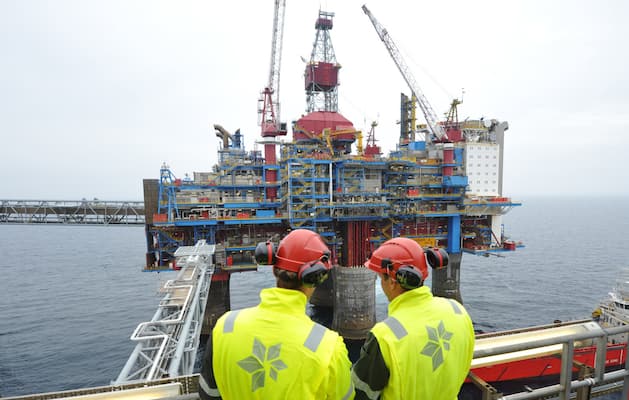The Ukraine war gave Norway record revenues for oil and natural gas last year. Not only within the EU as the best customer are calls for Norway to share its wealth. The population suffers from high energy prices.
Norway’s oil and gas revenues have increased tremendously in 2022. The Scandinavian country earned around 128 billion euros from gas exports and 52 billion euros from the sale of crude oil. While oil revenues grew by around 55 percent compared to the previous year, the volume of gas business tripled. At the same time, Norway hardly produced any more raw materials from its deposits. Oil production even fell by three percent, while natural gas rose a meager 3.3 percent.
Commodity revenues are the highest Norway has ever recorded. The last record was only set in 2017. They also ensured a record trade surplus in 2022. Minus all imports, Norway made a plus of the equivalent of 150 billion euros. As in previous years, most of this should also go to the state investment fund Oljefondet. With assets of 1.2 trillion euros, it was already the largest sovereign wealth fund in the world.
It was already clear last summer that Norway would achieve such a huge surplus. And as long as the finance minister could count on it, there were voices demanding that Norway should share its enormous wealth. After all, the country owes its record income to the war in Ukraine. For critics, they are just as much excess profits as the high revenues of oil companies last year. While some countries introduced excess profit taxes for this purpose, Norway as a state is spared such measures. Since the country is economically connected to the EU but is not a member of the Union, there are no legal options either.
Energy Minister Terje Aasland is well aware of the moral dilemma. “There are times when making money isn’t fun. We’re in one of those,” he said shortly after the Russian invasion began, as oil and gas prices soared. There is also a heated domestic debate about how Norway should deal with the excess profits from a moral point of view. “We have even more income than we already have, and yet we are cutting the development aid budget for taking in Ukrainian refugees,” said Jan Egeland, secretary general of Norwegian refugee aid, in August.
In fact, the Norwegian government lists a long list of aid that the country is giving Ukraine on its website, but many came late. At the end of September, the cabinet approved military aid of 281 million euros, mainly as a donation to international funds through which Western countries provide equipment and training for Ukraine. 188 million euros were made available at the end of November to supply Ukraine with Norwegian gas in the winter. And in early December, Oslo promised a further 94 million euros to rebuild the country’s electricity infrastructure. There are also smaller contributions to international organizations from the World Bank to the Red Cross, which also benefit Ukraine. Nevertheless, given the war profits of more than 100 billion euros, that’s not much.
“Norway thinks too short-term and is too selfish,” Rasmus Hansson told Politico. He is the head of the country’s Green Party and as such sits in the opposition. He thinks a panel of experts should determine a fair price for oil and gas. All income above that was war profits and Norway had to give them up. Criticism has also been coming from the EU for months, albeit in friendlier terms. “You are great, you supply us with gas,” said French President Emmanuel Macron in December in the direction of “our Norwegian friends”, but restricted that the high prices are “a thing that cannot work for very long.” Federal Minister of Economics Robert Habeck ( Greens) indirectly criticized Norway when he spoke of the fact that some friendly states would call for “moon prices” for natural gas.
The EU therefore jointly decided in October on the gas price cap, which will apply from February 15th. From then on, natural gas can only be delivered to the EU for a maximum of 180 euros per megawatt hour. There was a lot of criticism for this from the Norwegian government. However, it is still uncertain whether the lid will ever grip. Most recently, the gas price at the Dutch trading point TTF fell to 60 euros per MWh, the lowest level since September 2021.
But many in Norway are also dissatisfied with the way the government is handling the record income. However, they want less help for the stricken foreign countries than for themselves. Paradoxically, electricity prices in Norway have skyrocketed. The country does not produce its electricity from the rich oil and gas reserves, but mainly from hydropower. Because the summer in the north was just as rainless as in Germany, production is halting, more electricity has to be imported – prices are rising. This is fueling the overall inflation rate, which peaked at 7.5 percent in October and has since fallen to 5.9 percent. The government intervened in autumn with emergency aid for households amounting to around 94 million euros.
Follow the author on Facebook
Follow the author on Twitter
